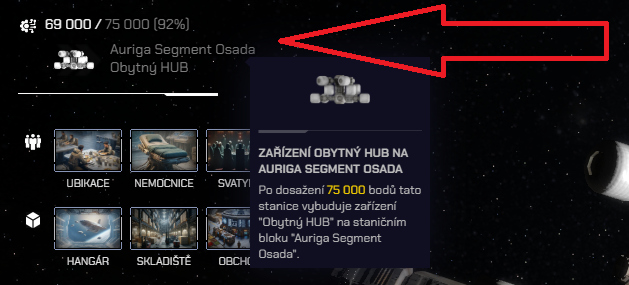Changelog
-
13. Oct 2025
Object Pickup on [G], Satellites
I have updated autoGrabbing – pressing [G] now opens a selection of what to pick up. Pressing [G] again picks up everything as before.
Satellites that recharge rigs now display recharge timers and have numbers for easier identification. I also fixed a number of rendering issues related to this.
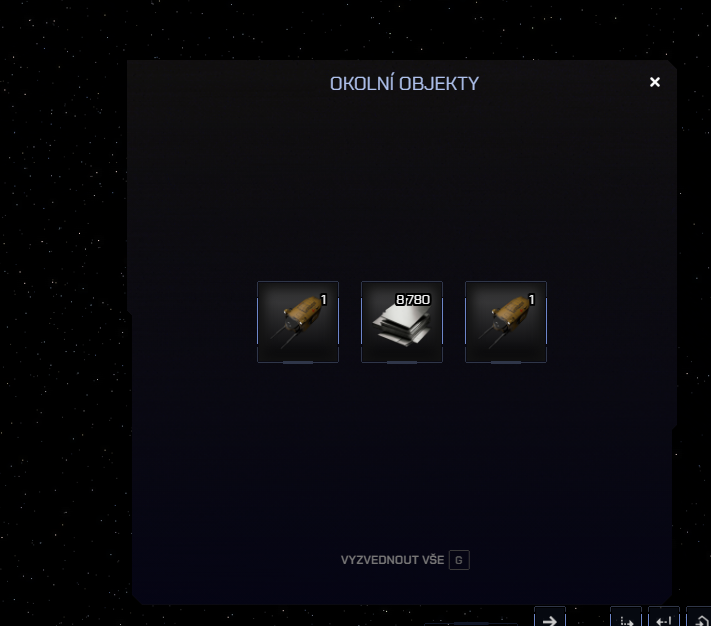
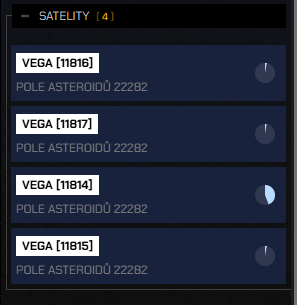
-
10. Oct 2025
Zone Membership Fee Settings
I added an option to set the percentage of experience contributed to the headquarters for each zone. The default value is 50 %.
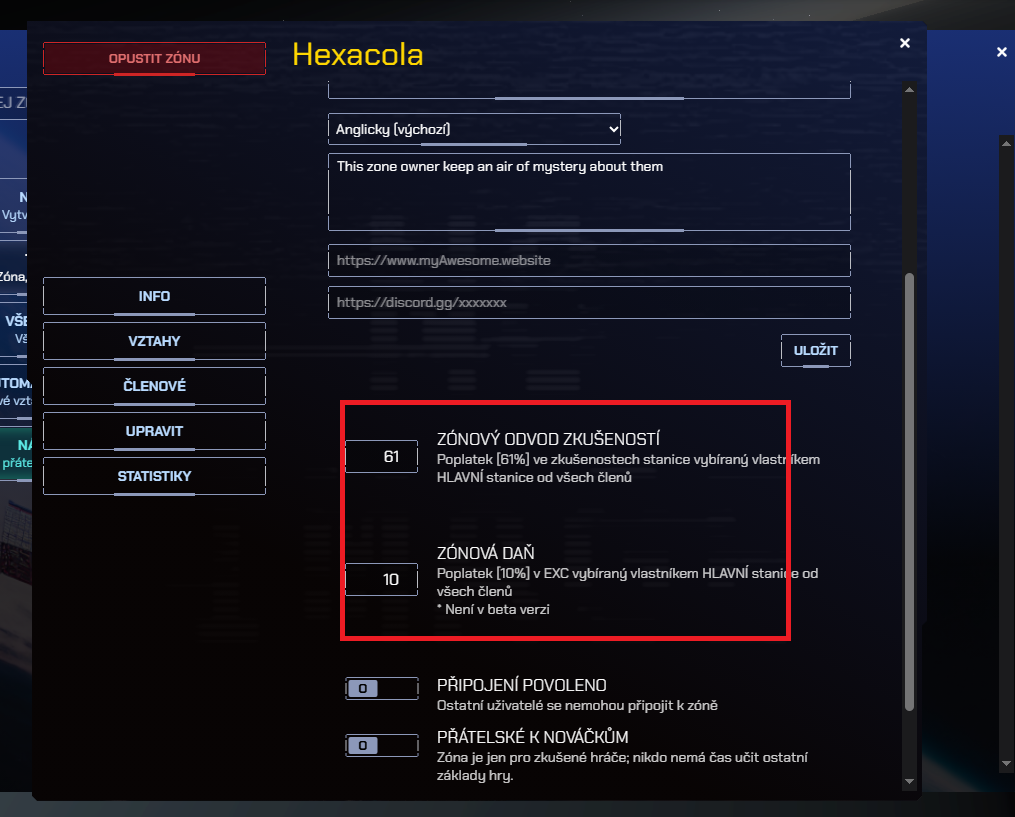
-
10. Oct 2025
Zone Membership Changes
The Envoy role has been renamed to Delegate – it’s just a name change.
When someone requests to join a zone, all DELEGATES and the FOUNDER receive a message. The applicant (CANDIDATE) also receives a message when accepted or rejected. A message is also sent if someone is removed from the zone.
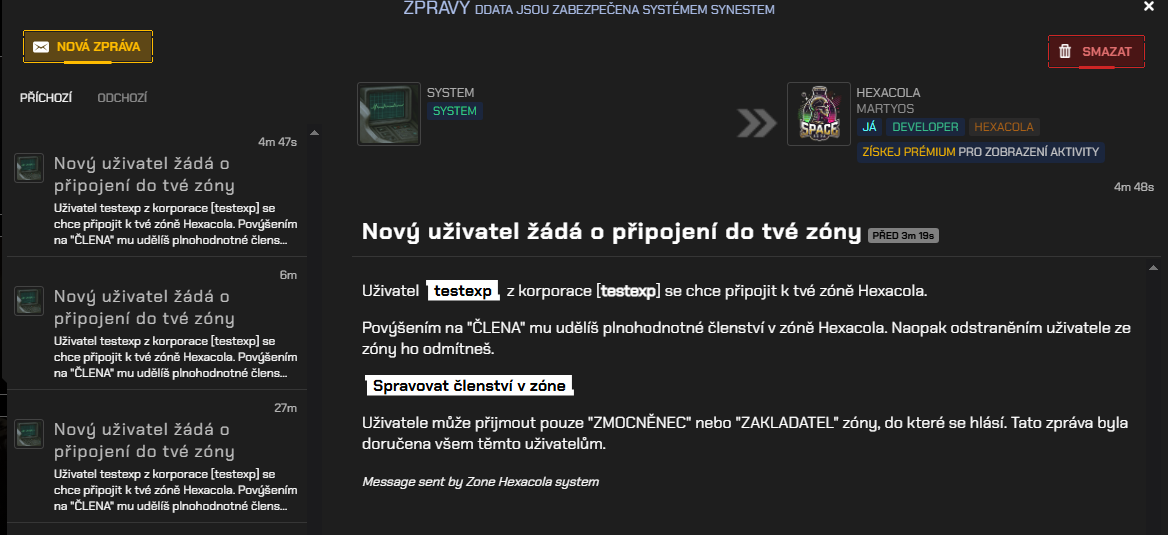
-
4. Sep 2025
Major Change to Station Experience Calculation
Previous system:
- All station experience went to the headquarters (main station) – even if it wasn’t yours.
- If you were a member of another zone, you didn’t gain any experience for your own stations.
- If the zone had no headquarters, the experience was lost.
New system:
- If you have your own station: X % of experience goes to the headquarters, Y % stays with your station (each zone sets its own ratio).
- If you don’t have a station: X % goes to the headquarters.
- If you own multiple stations: the X % share goes to the one with the Headquarters card installed. If it’s not installed anywhere, it goes to your oldest station.
- If you own the zone’s headquarters, it gains 100 % of your experience.
- If your zone has no headquarters, the experience goes to your station.
- If the zone has no stations, the experience is lost and all members are notified.
- If you are not a zone member and have no station, the experience is also lost and you receive a warning.
-
29. Aug 2025
Removed Delay When Drawing Cards
I removed the delay when drawing cards from the deck.
-
6. Aug 2025
New Planet Shaders
I reworked the planet shaders – currently testing them. They should be faster, and I also added a sunset transition. Oh, and I made the clouds more three-dimensional (not sure why I didn’t think of it earlier).
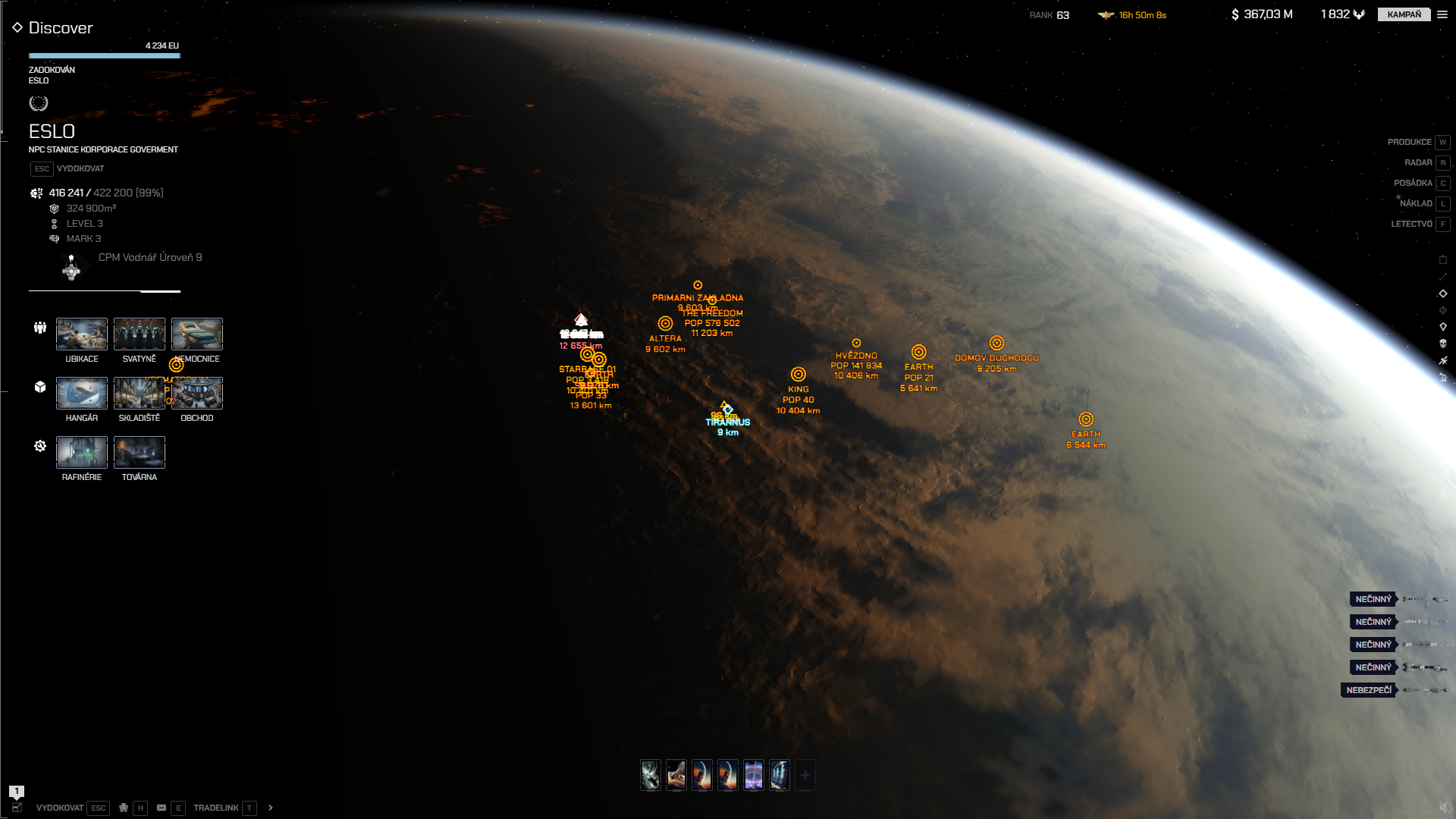
-
5. Aug 2025
Buy Orders
You can now set what you want to automatically buy from other players. Anyone who places a matching offer on the station market will be instantly purchased – as long as you have $ in your station bank.
You can also automatically create sell offers from your buy orders. This allows your station to act as a fully automated trading post – earning profits while offering valuable services to other players.
I believe this mechanic opens a new way of playing for haulers.
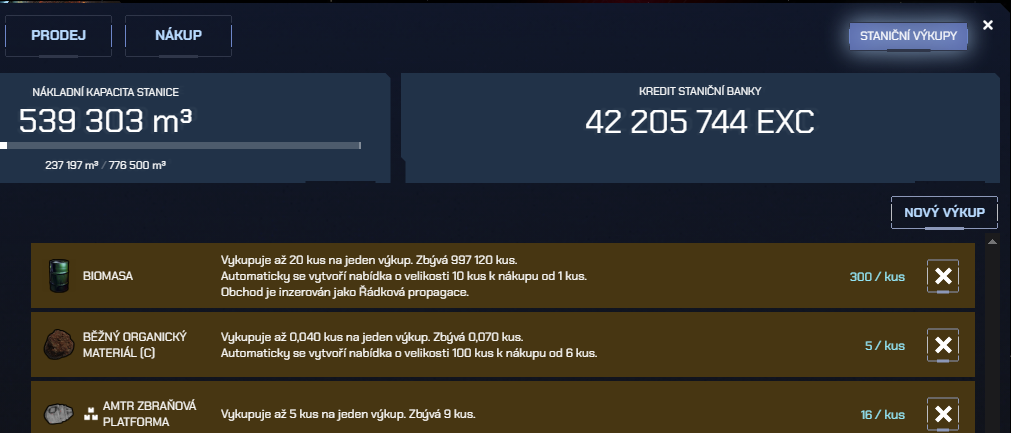
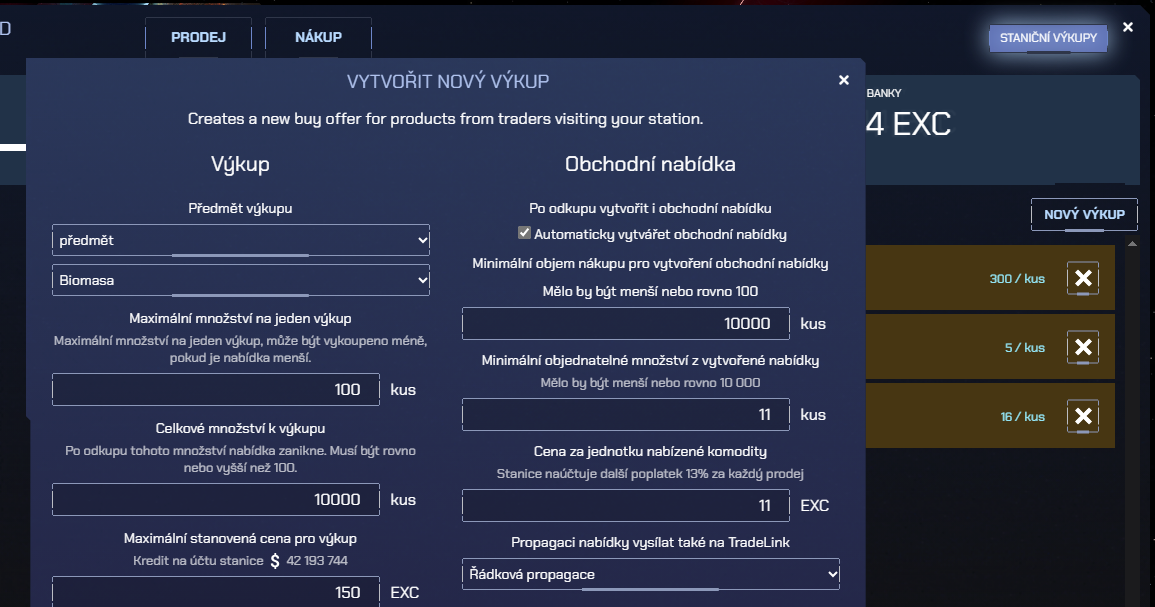
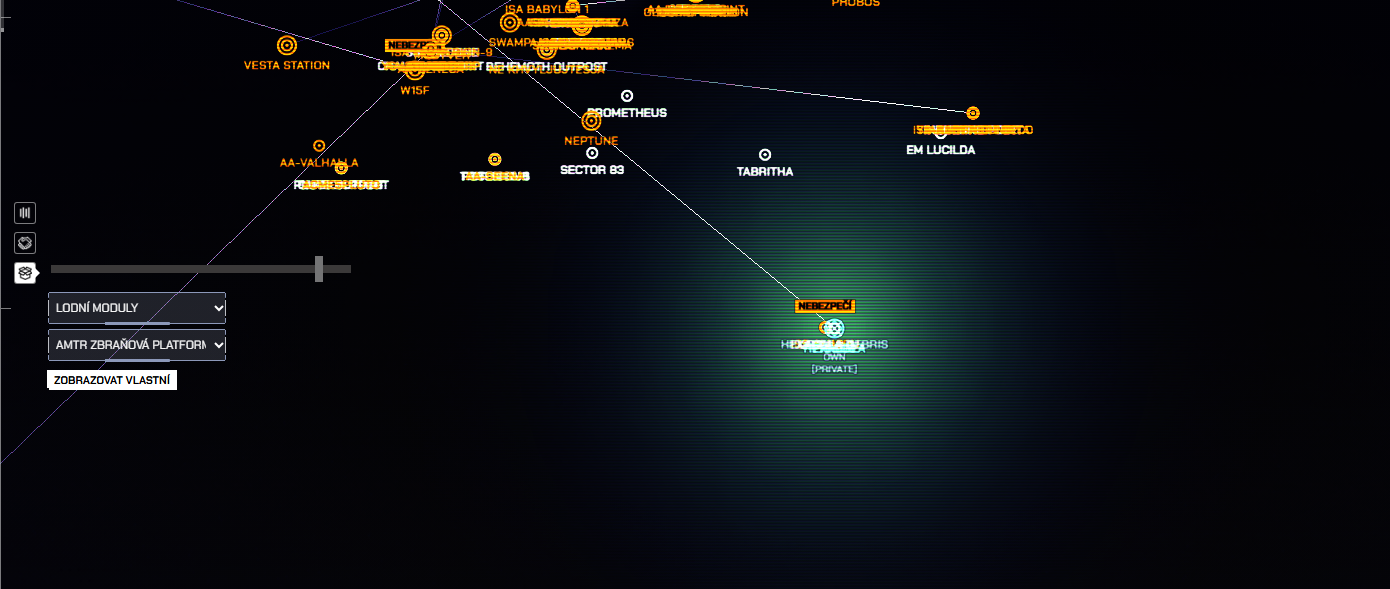
- Set your desired buy prices – sellers can find you.
- Create sell offers directly from your buy orders, maybe a bit higher priced.
- Find someone selling cheap and another buying high. Buy, haul, and sell.
- You get the credits instantly.
-
16. Jul 2025
Sound and UI
- Game menu now supports star sector sorting.
- In quest cards, you can now locate containers or decline missions remotely.
- Implemented a completely new sound mixing system — essentially rewritten from scratch. Sounds are now rendered relative to the camera's position, in stereo, with frequency range and amplitude adapting based on distance. This simulates sound distortion over longer distances as if in an atmospheric environment.
- Added many previously missing sounds.
-
30. May 2025
Locations!
I have added a new mechanic to the game: random locations. Over time, I will add more types and refine them to perfection.
Currently, you can discover:- Habitat: A place where you can purchase an astronaut.
- Observatory: Grants you a card or reveals the location of a hidden treasure spot.
- Treasure: A location where you can obtain valuable rewards.
- Ruins: Choose which resource you want to try to salvage from the ruins. It comes with risks.
- Deck Master: Casts a card onto your crew.
- Riddler: Offers hidden choices. You can either gain or lose.
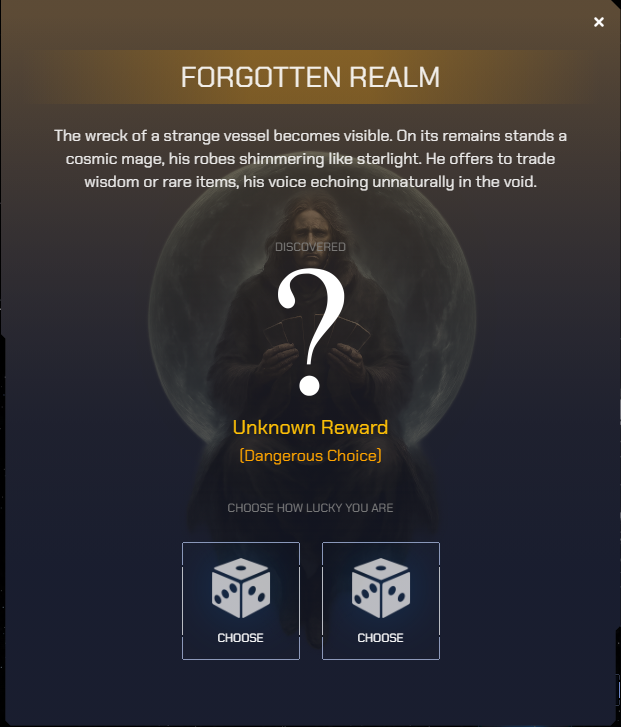
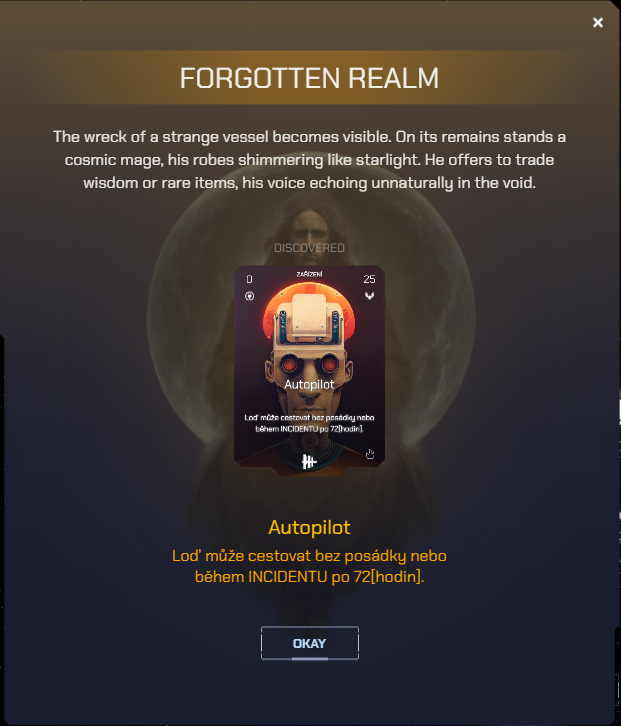
-
20. May 2025
We Can Send Messages
Outspace continues to improve, this time in communication. A long-requested feature is here:
User Messages
We have been testing this for some time in a small group, and it seems to work well.
How it works:
- New players can reply to messages.
- "Verified" players can initiate conversations, meaning they can send messages to anyone.
I have also added details to player accounts, such as zone and specific permissions, to prevent someone from easily impersonating an admin.
Note: Messages give zone admins significant power, so use them responsibly.
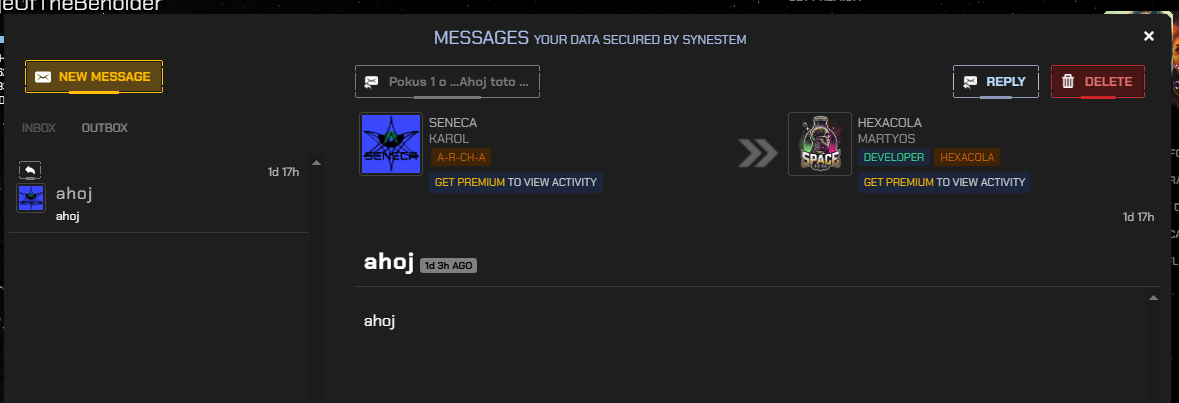
-
14. Apr 2025
Maximum TES Utilization Limit in Spaceship Workstations
I added a limit on the maximum utilized TES in spaceship module workstations (when selecting an astronaut at the minimum TES value, the "MAX" value is now displayed). It works so that the crew's TES value exceeding this limit is not counted. This applies to signal downloads, shooting, and all other activities related to the crew's TES.
-
10. Apr 2025
New Version Focused on Quality of Life (QOL) Changes
I have made changes in many parts of the game to significantly simplify it:
- Redesigned trading interface.
- Better overview of experience status at zone main station.
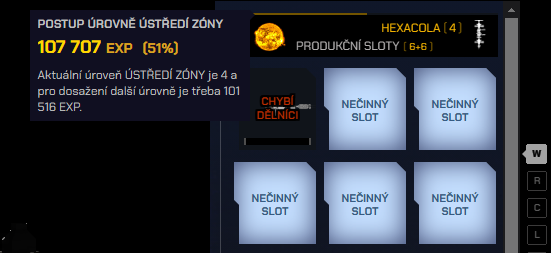
- The ship name is now also displayed on the browser tab.
- New interface for recharging ship energy.
- You can now configure who can recharge ships at a station (zone members, allies, everyone, no one).
- TES of robots on NPC stations now grows with station evolution similarly to TES of astronauts.
- If a ship warps and runs out of energy mid-route, it will not stay in place but will jump further once it recharges the minimum energy required for the next warp, continuing until it reaches the destination.
- Many new module types from the SCIOPLEX brand are now available on the market, designed for deep space exploration.
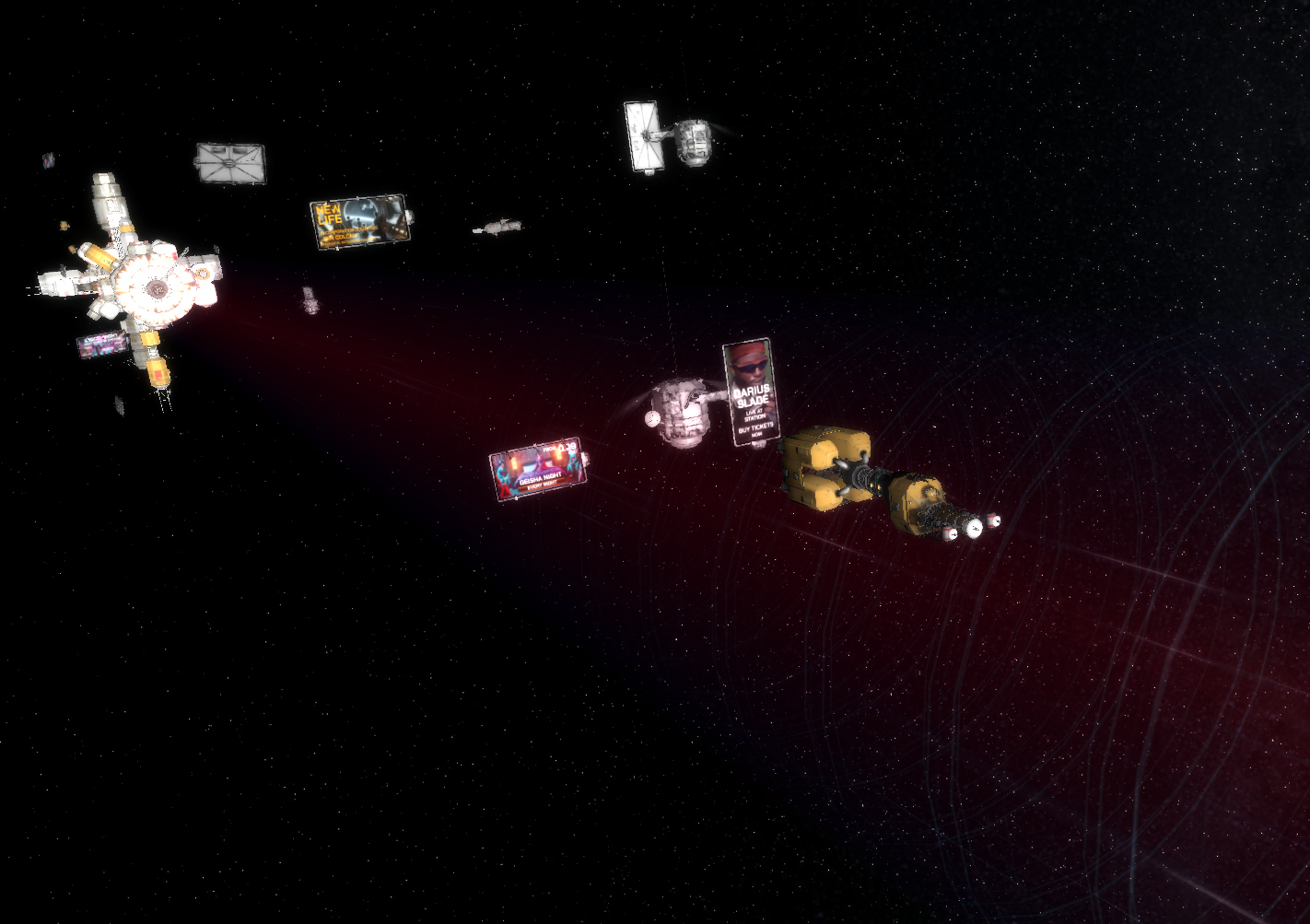
Many new module types from the SCIOPLEX brand are now available on the market, designed for deep space exploration.
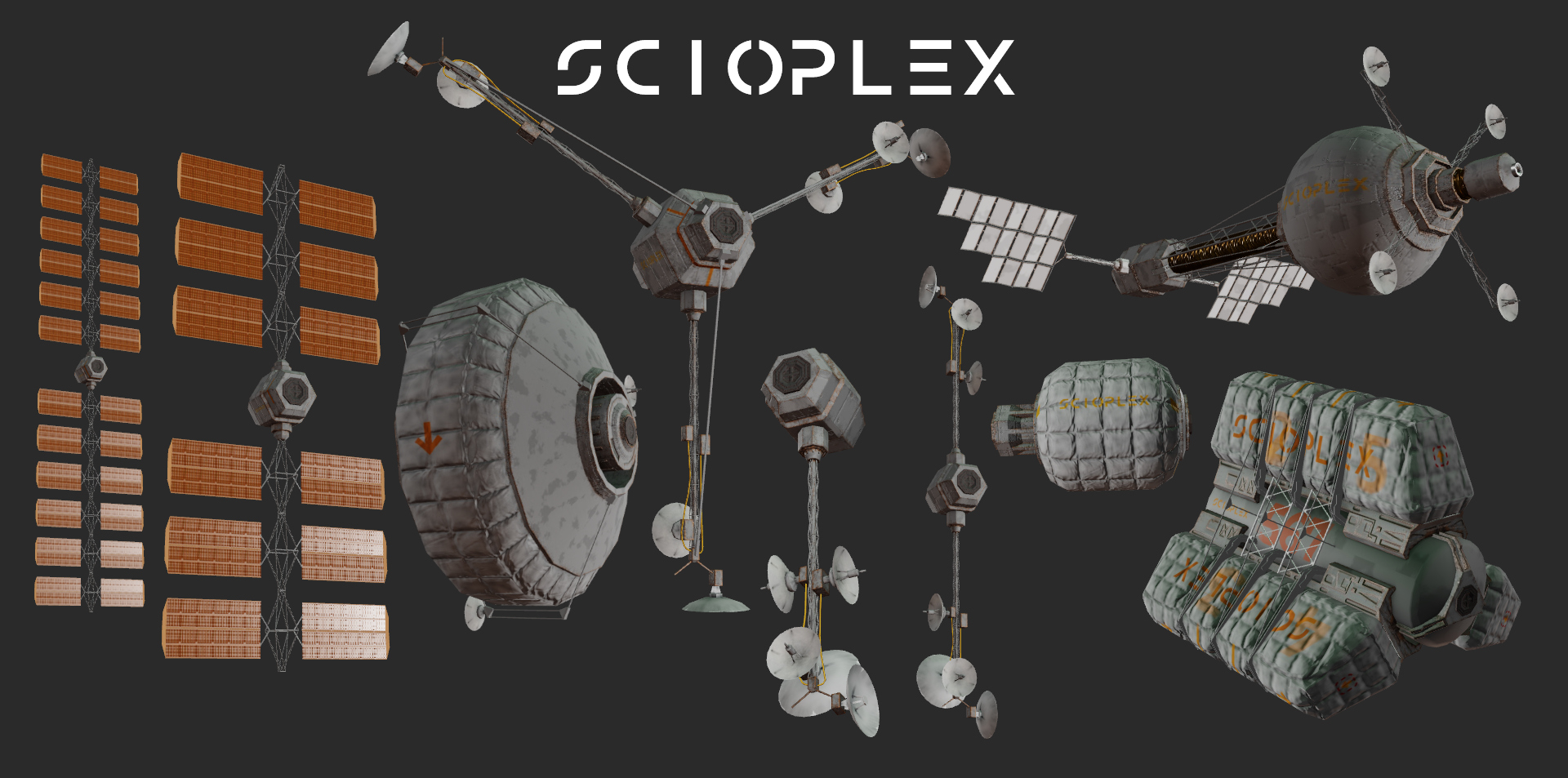
I have redesigned how the game handles card data and how cards are managed overall. The result is a change in how cards are sorted in the deck.
Not only can you now see how many of each card you have available in different places, but you can also quickly search through them. Additionally, the top section displays a list of the most used cards by each player for quick selection.
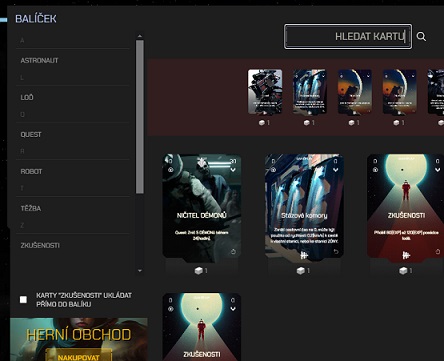
I have added the ability to place several cards into a quick access bar at the bottom of the screen. This keeps the cards readily available. If a card is not in your hand, clicking its icon will draw it from the deck and play it simultaneously (the morale cost remains the same as before).
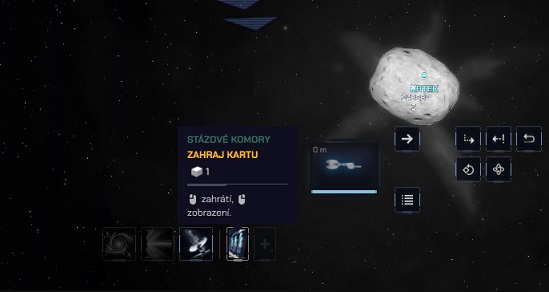
- Ships no longer randomly stop functioning – AI ships now run stably and have been operating for 2 straight days in tests. I expect this stability to continue as long as the server is up.
- The ship list in the hangar now also displays ships not in the hangar, grayed out. You can easily call them directly from this window.
- When selecting multiple ships, empty hangar slots are hidden, making it easier to see what you have available.
- When selecting multiple ships or ships other than the mothership, you can now assign crew and organize them into fleets. This allows you to fully manage the hangar for all ships at once and deploy fleets from multiple ships simultaneously.
- AI has been optimized – it is faster and sends less data. Larger battles should run smoother (I’d love to test a 100 vs. 100 battle).
- If a patrolling ship runs out of fuel, it will return to refuel. Once it reaches 50%, it will resume its task. For example, a ship defending a station will circle back and forth until destroyed.
- If a ship loses more than 70% health, it will automatically return to the dock.
- After refueling and restocking ammo, a ship will only continue its task if the target still exists (is not out of range or destroyed).
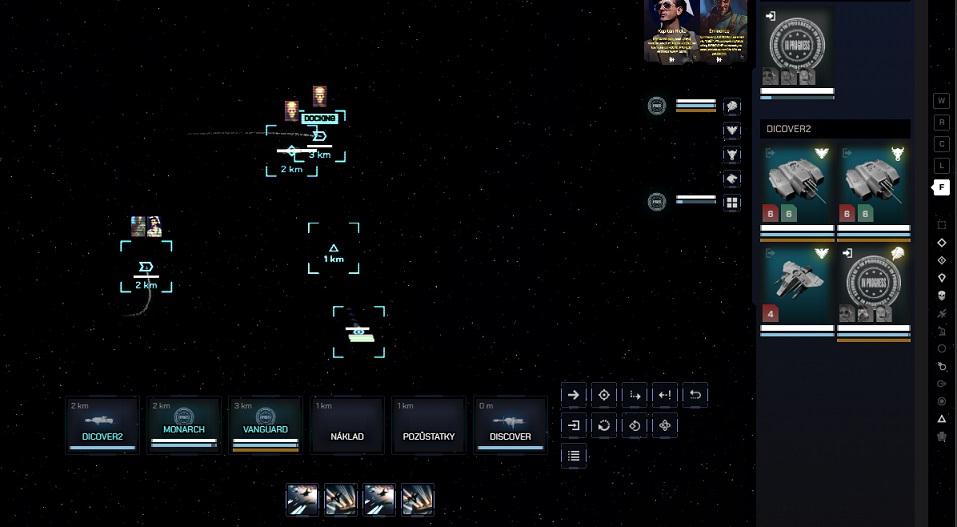
I have added the final major game mechanism that affects the flow of biomass and organic material in the game.
Until now, organic material types A, B, C, and biomass were considered waste that players would often overlook. As you might guess, there was always a reason why these things existed from the start.
Organic material is generated by killing Evil units. The larger the unit, the more material, and the harder it is to kill, the rarer the material that drops. Until now, it was possible to refine materials and extract resources from them. This hasn’t changed.
One of these resources was biomass, which until now had no use. That has changed.
Now, every colonist that is born needs a certain amount of biomass, which they recycle throughout their life. This generates material that ensures their intake of nutrients and fluids. If the colonist does not have this amount, they cannot be born. If biomass is missing from the station, birth rates stop.
Don’t panic!
Biomass can be replaced by a less efficient resource – specifically, human remains. This means that if biomass is missing from the station but there are human remains in the cargo hold, colonists will start using them. The advantage of remains is that they are generated when older colonists die, so the population is relatively self-sustaining even without your presence. Logically, it cannot expand until the material is replenished on the station.
The consequences of missing biomass are similar to the effects of a full housing capacity on the station.
Organic material is now becoming a precious resource, which will be appreciated especially by those who produce it as a byproduct of their activities – especially the Slayers of Evil, traders, or gatherers!

The translation of this website into English has been completed. It currently contains about 80 pages of written text and many tools and simulators of game mechanics.
Each zone now has visible statistics of its members.
Previously, statistics were only available from the zone headquarters bridge, meaning only the owner of the station could see them, which was inconvenient. Now, anyone can browse the statistics by simply finding a zone and its member. The statistics also show members who have left or changed the zone.
This makes it easy to get an idea of a player’s quality, which can be a good argument for accepting them into the zone or for showing respect for this member.
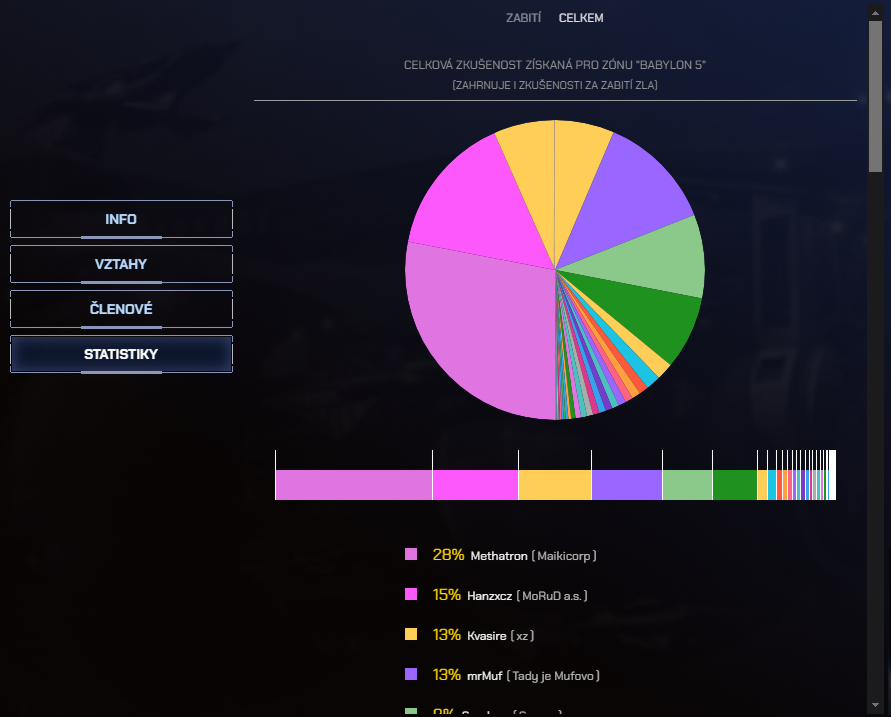
I discovered that the server was rounding small numbers to fewer decimals, so the number 0.00015 became 0.002.
Why is this important? This difference is multiplied by the amount, for example, when storing regolith, where the volume is per kg. So, for several tons, the difference in volume in the warehouse is significant.
As a result, items in the warehouse may occupy up to 1/5 of their original volume.
Production slots can now be expanded, showing the location where it occurs.

I have added the ability for NPC stations to grow based on how players use them.
Each time a fee is paid at the station, the station gains evolutionary points and gradually expands. Its storage capacity increases, it offers better astronauts and robots for sale, and much more. More details about station evolution can be found at Corporation-Operated Stations
